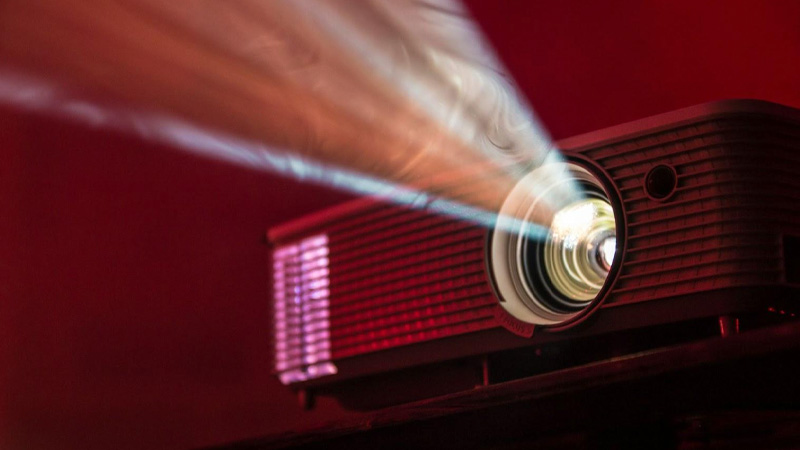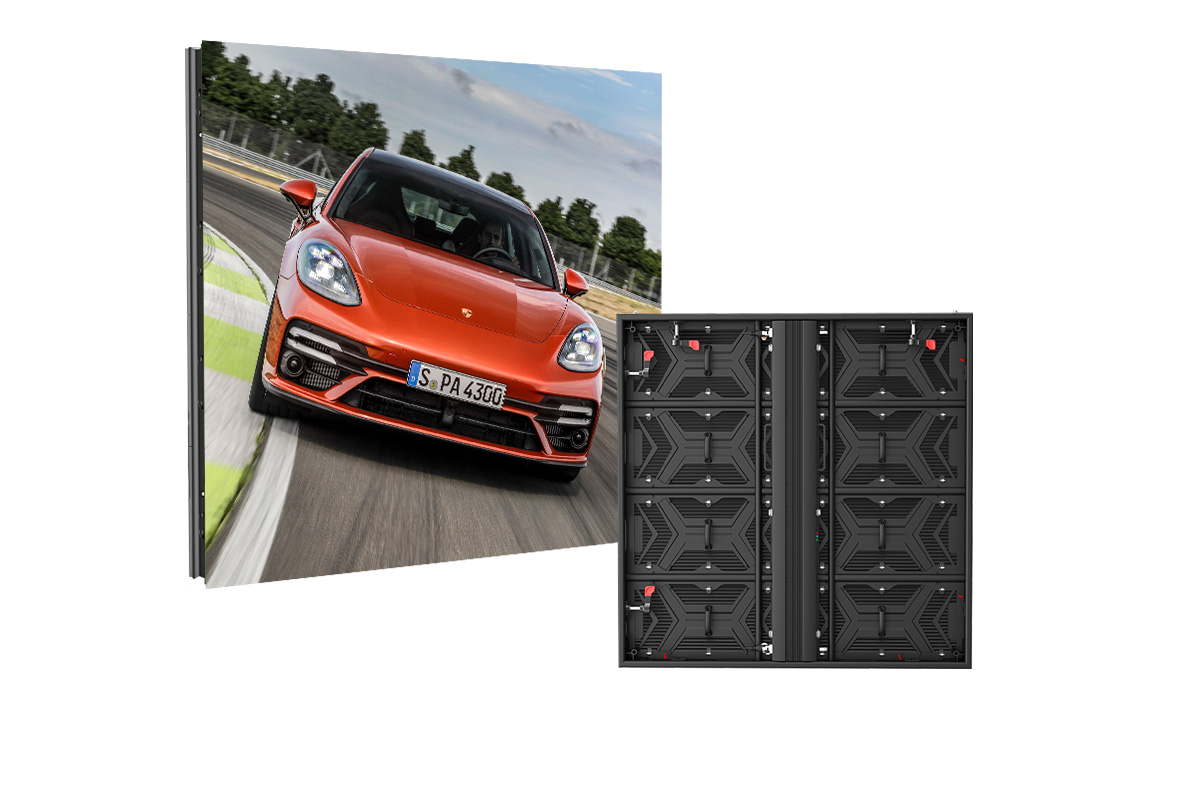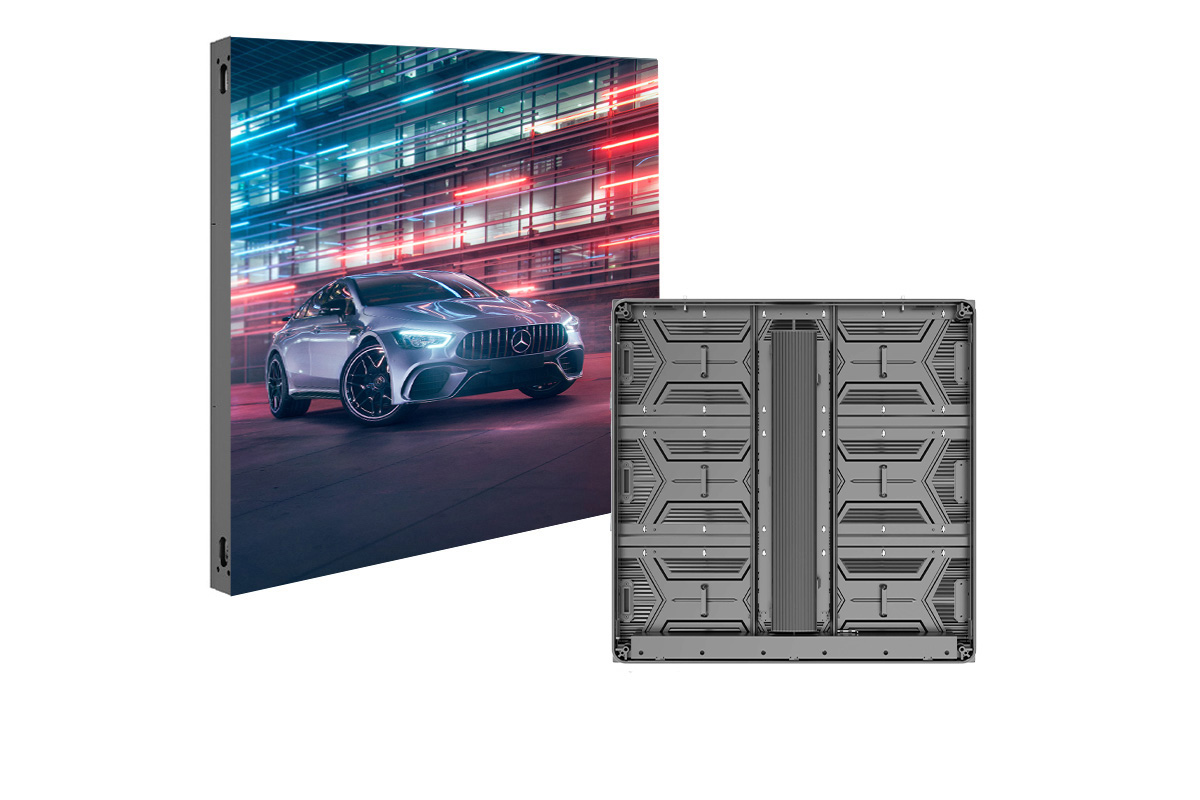How to Choose: LED Wall vs. Projector
There lies a difference between a LED wall and a projector to lead one in the right direction. Each of these technologies enjoys certain advantages over others. Thus, they find applications under different conditions. Let’s delve deeper into two options that shall help reach a well-informed decision.
1. What is a LED Wall and Projector?
LED Wall
A LED wall is a display technology comprising numerous light-emitting diodes. These diodes generate bright, high-resolution images. The screens are modular. You can connect several panels to make larger ones. For their overall appeal and adaptability in various lighting conditions. They have remained effective options for events, advertising, and large venue applications.
Projector
Projector is a device that requires a light source to cast an image onto a target area, usually a screen or a wall. Due to their portability, they have so much relevance in presentations and classrooms. They consist of types which include DLP, LCD, and laser projectors.
Key Differences
- Technology: While LED walls emit light. A projector requires an external surface to display the image.
- Brightness: LED walls are brighter and hence work well in well-lit conditions.
- Portability: Projectors are lightweight and easy to move. However, LED walls are generally immovable.
2. Image Quality and Resolution
The differences between LED walls and projectors come into play for performance and method of visuals. They excel at different things. Let’s break down the factors that affect image quality:
Brightness
The LED walls are extremely bright and can boast luminance values of around 5,000 to 8,000 nits and more. These conditions make them proper for outdoor placements or rooms with abundant light. A LED wall promises unchanged brightness regardless of time and ambient light conditions.
Meanwhile, projectors do use measurements of brightness in lumens. High-quality projectors boast as many as 10,000 lumens. But performance can be heavily dependent upon environmental factors. A dark room could bring out the best in a projector.
Contrast
Due to their ability to produce black and white colors in the same view, LED walls have higher contrast ratios. Making their visuals more intense and life-like.
Some projectors can also achieve good contrast, depending highly on the surface on which they project. Screen quality and ambient light can kill contrast and give the picture a washed-out look.
Resolution
LED walls are capable of ultra-high resolutions, including 4K and even 8K displays . They are designed for close viewing, ensuring sharp images without visible pixelation.
Projectors offer support for high resolutions, as several variants boast 4K output. However, if projected on a subpar screen or uneven surface, that may not be the case. This might be even more blatant with increasing sizes of projection.
If image quality is what tops your priority list, coupled with bright visuals in a lit-up environment. Then a LED wall fares much better. In controlled lighting, a high-quality projector does an impressive job.
3. Cost Comparison
Above all, get familiar with the financial implications of each of your options. The following is a detailed breakdown of some costs associated with LED walls and projectors.
Upfront Costs
- LED Display Walls: The investment in an LED wall upfront is rather much greater. They cost 10,000 to over 100,000 dollars. Adding to the initial cost of the system they must be installed professionally.
- Projectors: A projector costs 500 to 5,000 dollars. Hence making it cheaper from the very beginning. Other additional accessories may include a screen, which would add only a little more to the overall price, making it a very budget-friendly option.
Long-Term Costs
- LED Walls: They are durable and require frequent maintenance. Also, they have long life spans. Hence, replacement isn’t terribly frequent. The only negative could be that if one panel does get damaged. It may be quite costly.
- Projectors: Even though projectors are much cheaper at the outset. They have ongoing expenses. Bulbs or light sources will need replacement after several thousand hours and therefore pile up over time. Filters and less frequent cleaning also add up to maintenance costs.
Energy Consumption
Due to the brightness and technology, LED walls will consume a lot more power than projectors. If used for a considerable time, this may result in higher electricity bills. Projectors are much more energy-efficient. Therefore fitting better for those conscious of operating costs.
Considering long-term usage and the budget permits, an LED wall is more cost-effective in the longer term. For periodic use alone, the projector would turn out to be cheaper.
![]() Energy Saving Display 30% Design
Energy Saving Display 30% Design
![]() Standard Modules Front/Rear Service
Standard Modules Front/Rear Service
![]() Standard Size: 500×250/1000*1000mm
Standard Size: 500×250/1000*1000mm
![]() Display Can Operate at -20°C to 60°C
Display Can Operate at -20°C to 60°C
4. Installation and Space Requirements
Installing either an LED wall or a projector poses some special issues. This is all you would need to know:
Space Requirements
- LED Walls: These systems are to be mounted on a solid and stable structure. While the nature of the LED panels being modular will provide quite a bit of stress with regard to size. You will require pretty ample wall space to accommodate them. LED walls are not portable. Hence, they apply to permanent installations.
- Projectors: They can be used in small rooms down to large auditoriums, given there is a surface on which to project the image. Projectors are very portable and versatile.The distance between projector and screen, known as throw distance, would need to be pre-determined based on desired image size.
Installation Process
- LED Walls: To install a LED wall, one needs experience. Panels have to align perfectly. Wiring should be well organized, and the system should be calibrated perfectly. Professional installation is a must.
- Projectors: In setup, projectors are pretty easy. Most models come plug-and-play and take little time or effort to mount on the ceiling or place on a table. Screens can be mounted on walls and pulled down when needed.
Environment and Room Considerations
- LED Walls: This display technology is very flexible in terms of the lighting conditions around it. It is usually used for outdoor applications or for places with bright surrounding lights.
- Projectors: For projectors, optimal usage occurs in dark or at least dimly lit environments. As it is going to be washed out by the surrounding ambient light. One may use blackout curtains or control the lighting within the room.
Maintenance and Longevity
- LED Walls: LED walls have long lives and require minimal maintenance. Normally, cleaning dust and doing occasional cleaning will suffice.
- Projectors: For projectors, maintenance is more regularly required. Filters need to be cleaned, and bulbs changed after a few thousand hours of use. Thus increasing the overall effort of maintenance.
For permanent, convenient service, an LED wall is the best option. In portability and versatility, a projector is the better option.
5. How to Decide Between LED Wall and Projector Based on Your Needs
The right choice can be based on your very own requirements. Here’s how you can choose between an LED wall and a projector:
Use Case
- Events held, running an advertising campaign, or creating permanent displays in a high-traffic area. Then you would want to go ahead and choose a LED wall.
- You would want to go with the projector option if it is a casual presentation, home theater presentation, or a temporarily setup presentation.
Budget
You have a substantial budget, for something of a long-term investment. Then you can go for a LED wall. It is pretty economical if one has a tight budget or is looking for an infrequent use solution.
Ambient Environment
If the ambient environment is bright or outdoors. Then the LED wall wins hands down. If it is indoors and the settings are controlled. Then a projector would do.
Portability
If the display needs to be mobile. Then there’s not much option other than a projector. A LED wall is way more reliable and does a better job for fixed installations.
Pro Tip: Always keep life-span and recurring cost in your mind. Yes, projectors appear to be cheaper. But the cost of bulbs, filters, and electricity is greater on a long-term basis.
![]() Standard Modules Front/Rear Service
Standard Modules Front/Rear Service
![]() Standard Size: 480×320/960*960mm
Standard Size: 480×320/960*960mm
![]() Ultralight Aluminum Profile Cabinet
Ultralight Aluminum Profile Cabinet
![]() Display Can Operate at -20°C to 60°C
Display Can Operate at -20°C to 60°C
6. Conclusion
The decision between a LED wall and a projector may depend on the need, budget, and environment of a person. They differ in brightness and durability, with LED walls having much higher values, while projectors are more portable and cost-effective. Assess your needs carefully to decide correctly.
Contact
 Building D, Hongfa Science Park,
Building D, Hongfa Science Park,
2035 Songbai Road, Shiyan, Bao’an District, Shenzhen, Guangdong, China.







